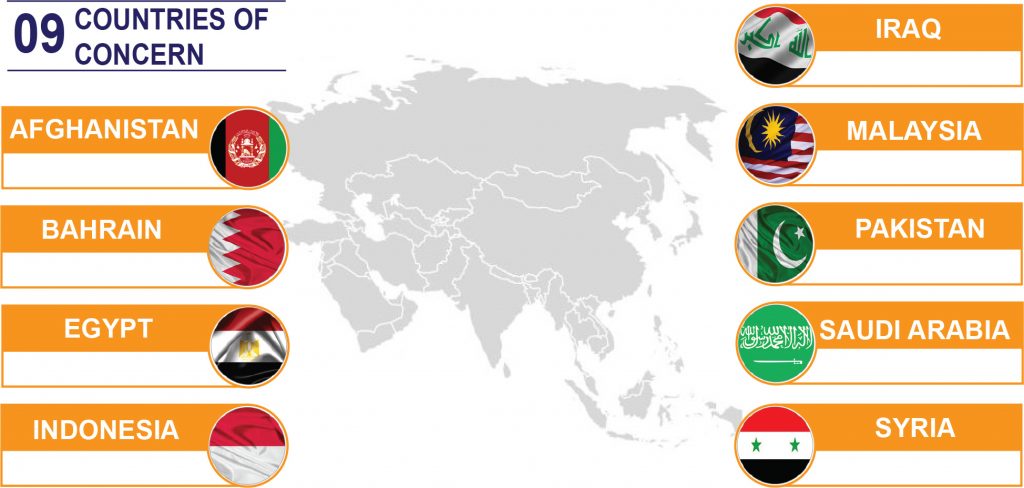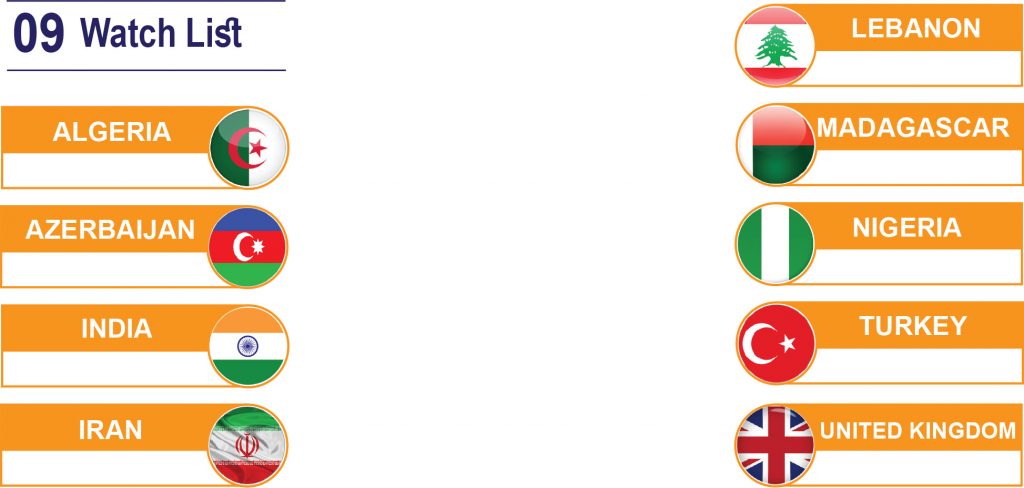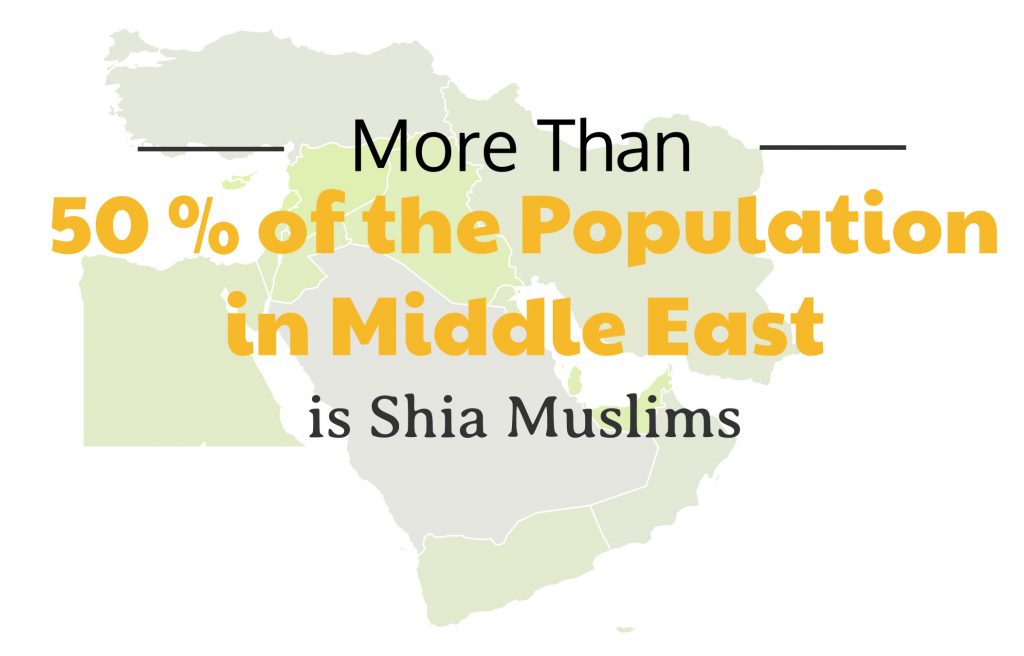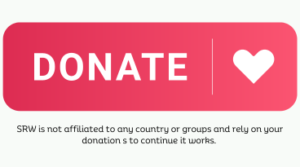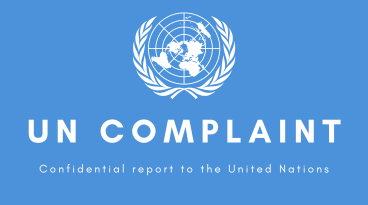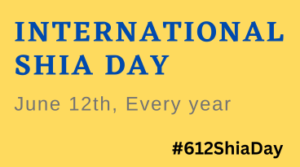2017 Annual Report
2018 marks the 7th anniversary of Shia Rights Watch. Over the past seven years, our organization and our team have grown from a Washington, DC-based minority rights group to an internationally renowned institution active in both the United Nations and the International community.
Our qualitative and quantitative research and development teams work together to present unique tools to mediate religious conflict and systematic discrimination of minority groups all over the world. Our organization offers holistic data to promote peace-building endeavors in both regional governments and grassroots entities with the hopes of one day reducing prejudice against religious minority communities.
Shia Rights Watch’s dedicated team of volunteers work strenuously to make sure incidents of Shia Rights violations are documented meticulously and are profiled such that they can be used in the prosecution of anti-Shiism in the high courts. Our team members prioritize humanitarian action, putting their utmost effort into holding SRW accountable.
In 2018, Shia Rights Watch has trained a team of researchers and conflict resolution practitioners in the creative facilitation of dialogue and outreach, allowing them to exceed their geographical and social limitations. Given the technological and informational advancements of our times, Shia Rights Watch believes in a global community in which time and location are continuous.
Each year, we look back to our past work and think of ways to develop tools that would help the global community to either prevent or confront Shia rights violations. Our organization aims to sponsor, mediate and facilitate dialogue between the Shia community and their governments, giving them autonomy to design a strategy that would allow their society and state to work hand in hand towards building an environment free of violence.
I am proud of our team and encourage anyone who can help to join the Shia Rights Watch team, and use their creativity, momentum, and ambition towards building a global community that lives in peace, respect, and acceptance.
Mustafa Akhwand
Executive Director of Shia Rights Watch
Beside moral obligation, human rights and democracy are the essential foundations of secure and functioning societies. Safe countries are ones with the most productive politicians, prosperous economies, satisfied citizen and successful developments. Therefore advancing liberty, honoring human rights and dignity, and global prosperity through reciprocal respect between governments and their constituents are a must.
The Shia Rights Watch monthly and annual reports demonstrate the scope of on-going Shia rights violations and the need for immediate international commitment to stop and prevent anti-Shiism. Violence prevention can lead to a more stable and safer society in which people can reach their full potentials.
Shia Rights Watch reports are meant to provide policymakers, journalists, human rights activists and prospective researchers with an accurate accounting of Shia rights violations in different parts of the world. This NGO also hopes these reports will help governments, civil society leaders, campaigners, and individuals reflect on the state of human rights in their countries and work to promote accountability for violations and abuses.
Human rights are where interest and values meet, not only to serve nations but to make them safer places.
Hawraa Zakery
Researcher and Human Rights Advocate
The world has gone through significant changes during 2017. Changes have been predominantly in the Middle East and North Africa (MENA) and are inclusive of, but not limited, to the following:
● Kurds considered minorities within Iraq and Syria declared independence referendum.
● Saudi Arabian prince Mohammad bin Salman reformed the hierarchy of the kingdom by launching anti-corruption committee, threatening and arresting a number of princes and businessmen. This nation also promised historically unknown freedoms for Saudi women.
● Gulf nations such as Saudi Arabia, and Bahrain, abandoned Qatar by cutting all relations with this country.
● Unnecessary and on-going Saudi-led war in Yemen killed on average 100 civilians each month according to the United Nations and resulted in the outbreak of cholera in Yemen.
● ISIS has lost ground in Syria and Iraq which is a great victory but suggests the expansion of ISIS to a new shelter in neighboring countries .
These events may have happened independently of each other, but together they represent a powerful shift in politics of the region. A change in power has profound effects on minority groups.
For the sake of this report, and to keep the focus on Shia Muslims, we look at some of the significant changes in the countries in which Shia Muslim rights violations has become a growing concern.
Countries of Concern are countries in which Shia Muslim rights violations have been reported over the past decade. Nations with temporally and systematically prolonged abuses are listed under Countries of Concern (CC), and countries with sporadic incidents of violence are listed under Watch List (WL).
Countries of Concern: Afghanistan, Bahrain, Egypt, Indonesia, Iraq, Malaysia, Pakistan, Saudi Arabia and Syria.
Watch List: Algeria, Azerbaijan, India, Iran, Lebanon, Madagascar, Nigeria, Turkey, United Kingdom.
Nations listed under CC and WL are monitored in frequency and severity of violations in an ongoing database, which is used to suggest policy measures to governmental and non-governmental peacekeeping endeavors.
This annual report reviews anti-Shiism in each of these countries and suggests analyses to understand trends of violation better and take measures to prevent future incidents.
Reduction of Anti-Shiism?
Although restrictions and political pressure continue in some countries, the overall number of fatalities published in 2017 has decreased compared to previous years. SRW is happy to share with its members and audience that their advocacy, support, consultations, and representation in the United Nations along with cooperation and hard work of other human rights NGO’s and entities have resulted in more awareness of Shia Muslim minority around the world.
Although the loss of one life is way too many, any reduction of violation and causality is good news. Shia Muslims, in a noticeable number of countries, enjoy more freedom and safety. Shia Muslims of Oman, Kuwait, and Azerbaijan have reported feeling safer than before compared to many neighboring countries. Even Iraq had fewer casualties than previous years.
As a human rights NGO, there is always a concern that reduction in numbers could be as the result of systematic neglect of media outlets toward this population. However, the overall living standards, satisfaction and freedom of expression and religion of Shia Muslims have improved as per local activists and grassroots interviews. SRW continues to advance human rights availability and enhances the lives of all humankind, especially those isolated by repressive governments.
Highlights of the year
The following are some of the episodes that have directly affected the life of Shia Muslims in 2017.
Saudi Arabia: First Military Crackdown of Shia Muslim
Although Shia Muslim rights’ violations have been reported in this country, in the past, most violations took place behind closed doors. The first quarter of 2017 was an eventful and unfortunate time for Saudi Shia Muslims as national forces openly attacked and seiged Shia Muslim towns and cities, arrested peaceful protestors, and limited resources to this population.
Such crackdown did not stop, however, midway through the year, launches of anti-corruption committee shifted the news’ focus from anti-Shia Muslim activities to the arrests of multi-millionaires such as Prince al-Waleed Bin Talal, the world’s wealthiest individuals. Shia Muslim violations are hardly covered by news agencies, and new changes in politics took away the very little that was included.
Mohammad bin Salman also promised to give more freedom to women, allowing them to drive, obtain a driver license without their male guardians’ permission, and to attend sports games. Women rights activist are thrilled with the new promises and changes that result in social and political participation for women. However, there is no sign of more freedom for other minorities in the kingdom. Local activists report more freedom for women could be a cover up for many violations happening within the nation.
Bahrain: Civilians Try in Military Court!
In a historic decision, on April 2017, Bahrain’s king, Hamad bin Isa al-Khalifa, approved a constitutional amendment to Article 105(b) of Bahrain’s constitution granting military courts the right to try civilians. Military courts in Bahrain were previously limited to prosecuting members of the armed forces or other branches of the security services and could only try civilians under a state of emergency. Under the new amendment, the courts have the power to prosecute any civilian accused of threatening the security of the country.
As a result any pro-democracy movement, critique of the king, and assemblies to demands equality and right are considered “threatening,” activists, who happen to be mainly Shia Muslims, will be tried in military courts.
Although this amendment took place in 2017, in 2011, seven men went on trial in a military court as the country’s first-ever civilians to be tried before such court. SRW believes the Bahraini government has gone out of its way to ratify anti-Shiism into its laws.
Afghanistan: ISIS and Taliban Hand in Hand
In an unusual cooperation between Taliban and ISIS, on August 4th, approximately 800 armed men launched a three-pronged attack on a village in a remote mountainous region in north-central Afghanistan. Mirza Walang is a large and densely populated area in a strategic district called Sayyad in the province of Sar-e-Pul. In a joint effort, ISIS and Taliban agents attacked the village at midnight. More than 1800 families were trapped and surrounded by the extremists. According to local activists, 80 people including women were reportedly taken a hostage and transported to different regions.
The governor of the district, Sharif Aminyar, told The New York Times, “Despite several demands for air support and special forces, the demands were ignored by central government.” . On the 15th of August, three mass graves were discovered in the area containing bodies of more than 40 people including beheaded women and children.
Although there are many similarities between ISIS and Taliban, these two groups have not publically collaborated in the past. Since ISIS has lost ground in Syria and Iraq, the fear of them looking for new shelter has raised.
Lack of local governmental support to Shia Muslims, in addition to the existence of Taliban created the environment in which ISIS could find a haven, and that is worrisome for both Shia and their rights activists.
Pakistan: New Fears
The insecurity and lack of protection of Pakistani Shia Muslim once again manifested in the year 2017. Beside ongoing targeted attacks, roadside shootings and explosion, fear of increased anti-Shiism interrupted the life of Pakistani Shia. This July, approximately 1,000 Shia, on their way back from a pilgrimage from holy sites in Iran and Iraq, found themselves unable to continue at the border between Iran and Pakistan in the town of Taftan. The pilgrims preferred to put up with the harsh environment at the border than risk traveling through Pakistan unguarded as historically many buses were attacked in similar situations.
Facing so much insecurity and lack of governmental support either prevents Pakistanis from attending pilgrimages or creates more fear and disturbance in their lives.
In the past year, Pakistani Shia Muslims took to display their power by peacefully protesting their concerns. Incited by the increased frequency of violence, civilians voiced their needs and worries.
Africa, New Home for both Shia Muslim and Anti-Shia Muslim
Africa is the most recent target of anti-Shia groups as it is home to the fastest growing Shia Muslim population. In countries such as Nigeria and Madagascar, Shia Muslim leaders have been attacked, their education centers been raided, and Shia security threatened. As the Shia Muslim population grows in this part of the world, SRW’s concern of establishment of anti-Shia Muslim groups grows too. More importantly, as ISIS is losing ground in Syria and Iraq, Africa could become a safe haven for this terror group and their supporters.
Now that this continent has opportunities for both groups to grow, it is vital that Shia Muslim populations take measured to be safe and to create rapport and collaborate with local authorities to prevent possible violations.
Dangerous Associations
Shia Muslims are citizens of different countries of the world and come from diverse backgrounds, ethnicities, political views, etc. In the past it was to the benefit of the local governments to associate Shia Muslims to Iran, and as a result, withdraw their support from their Shia population.
SRW has published a number of articles, presentations and informative sessions to educate the international committees about the falsehood and danger of such association. Shia Muslims are not dependent on any governments. Governments and international committees have to separate the general Shia Muslim public from specific groups with political agendas. SRW requests that all international entities, governments, scholars, and researchers distinguish the general Shia Muslim population from any specific government, political or militant group. Shia Muslim have strong citizenship manners as honoring and respecting their country and law are part of their faith requirements.
There has yet to be an accurate account of the Shia Muslim population. Their numbers are unknown. Shia, no matter where they live, have been a targeted minority. Whether discriminated against by their governments, local or international terrorist groups, or individual extremists, this population keeps a low profile as a survival mechanism. As a result, there is no country in which the quantity of Shia Muslims is known.
This article intends to offer a fresh look at this population.
The Middle East is home to 24% of the global population and all countries in the Middle East are Muslim nations. The total population of the Middle East is estimated to be 218 million. A lack of information fuels belief that the majority of the Middle Eastern population, all countries combined, are non-Shia. However, that claim is inaccurate.
More than 120 million people live in Iran, Iraq, and Bahrain, all of which are majority Shia Muslim populated. Take note Shia exist in other countries as minority populations. If we were to add the probability of Shia existing as minorities to nations in which they exist as the majority, the Middle East would comprise more than 50% Shia Muslims.
Based on the population of Shia Muslims in majority in the aforementioned nations, more than 50% of the Middle East are Shia. It is accurate to say this region of the world, in general, is a Shia Muslim majority area. Regardless of leadership, this group is the number one most killed, arrests, tortured, pressured and interrogated in their homelands and elsewhere.
In other words, in the Middle East, Shia Muslim are the majority in numbers but a minority in rights.
Anti-Shiism: Trends, Numbers and Locations
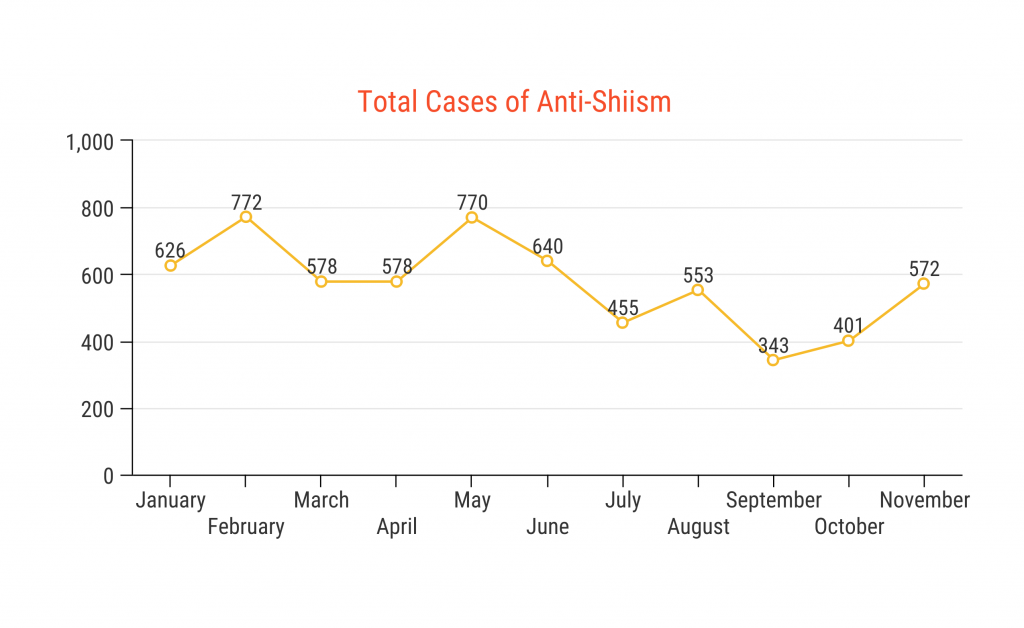
To view trends of anti-Shiism, SRW has collected data on cases of direct, systematic and cultural violence against Shia Muslims. Anti-Shiism is defined as the ac
tive targeting of Shia Muslims to limit their visibility and expression. SRW emphasizes that Shia Muslims are constituents of all nations around the world, and thus data is international. Information in regards to the case of anti-Shiism is collected by local respondents, self-reports, and through international news sources.
The year 2017 stood witness to a total of 6,388 cases of anti-Shiism in the nations of Iraq, Bahrain, Saudi Arabia, Afghanistan, Pakistan, Madagascar, Algeria, and Nigeria. It is important to note that Shia rights abuses listed in this report are a summary of incidents that have reached SRW. Violations are not limited to those in this report. Further, cases of cultural discrimination or the isolation of Shia individuals are qualitative data that was not highlighted in this report.
More information can be found on ShiaRightsWatch.org.
The nature of violations is specific to each nation. Types of violence include, but are not limited to death by unnatural means, injury via malice, abduction, arrests, limitation in religious expression and congregation, all of which are detailed in the sections below.
NOTE: Nations below are presented in alphabetical order.
Afghanistan
Amidst conflict in Afghanistan, Shia Muslims live in peril. Anti-Shiism propagates in the nation by the extremist organization and systematic discrimination. Terror groups such as the Taliban and ISIS continue to target Shia centers of education and religious practice. Passenger vehicles carrying Shia pilgrims to and from major holy sites in and out of Afghanistan are also identified and targeted. Within the first half of 2017, the United Nations reports 1,700 Shia civilians have been killed as a result of anti-Shia sentiment.
Attacks are mediated to allow for mass exposure. They occur mainly during holy months and in crowded areas. The month of Ramadhan stood witness to the extensive targeting of Shia mosques and centers. Previous to Ramadhan, in a speech, ISIS leaders renounced Shia, called for their cleansing and promoted the month of Ramadhan as the best month for anti-Shia action.
Attacks in Afghanistan have centered mainly Shia populated areas of Kandahar, Baluchistan, Kabul, Mirza Olang, and Tala was Barfak.
The single most gruesome incident of anti-Shiism was in late December when ISIS affiliates detonated three consecutive IED’s in a building in west Kabul. The date coincided with the anniversary of USSR invasion of Afghanistan. Over 50 people were killed, and 84 were injured when the first bomb exploded in the basement of the building, where a Shia center of the congregation was located.
In addition to increased direct violence from terror groups, the lack of prosecution of previous acts of anti-Shiism continue. The government fails to provide security for Shia populated areas, and despite advocacy, Shia Muslims are treated as second-class citizens. Ethnic groups such as the Hazara are discriminated against due to their religious identity.
Algeria
Pilgrims traveling home from a trip to Iraq for the annual Arbaeen ritual were detained upon entrance to the country. Sources report over 400 Shia Algerians were treated in a discriminatory fashion, harshly investigated and forced to wait long hours for a two week period following Arbaeen. Religious material such as prayer stones, prayer books, and attire were seized by government forces.
Such a scale of anti-Shiism was new for this country. However, this incident may be the first sign of systematic anti-Shia sentiments.
History of Shiism in Algeria reaches back to the Middle Ages when the western region of the nation was a segmented ruled by the Idrisid Dynasty. Among the immigrated Shia Muslims are native Ismaili Shia Muslims with roots in Kutama Berbers who converted to Shiism in 909 CE.
Bahrain
In 2017, crackdowns against freedom of religion and expression continued leading to the detainment and even death of native Bahraini Shia.
Despite government aims of deterrence, the house arrest of Shiekh Isa Qasim has incited more protest among Shia communities. Sheikh Qasim was revoked of citizenship in 2016 and now is limited to the confines of his home in Diraz. The single most incident of arrests occurred in May, two days after Sheikh Qasim was convicted, security forces raided Sheikh Qasim’s home and arrested 286 protesters called upon the government to free Sheikh Qasim. By reports of the Interior ministry, five were killed as well.
Post-2011, Bahraini Shia has taken to the streets in protest of their lack of representation in legal affairs. Bahrain is comprised of a majority Shia population but is led by a minority non-Shia group. In addition to lack of representation, Shia in Bahrain is limited in expression and freedom of congregation. Human rights activists report a systematic slowing of internet speeds, cutting off phone lines as well as limitations in travel. In early September, Bahraini officials called upon religious scholars and centers ordering limitations in visibility and restriction of religious expression to inside religious centers. The ministry of interior furthered that failure to meet the new guidelines will result in detention and torture. Days following the threats, security forces raided numerous Shia villages, namely Shahrakan, Jid Ali, Malkiya, Ekr, Abu Saiba, Shakhura, Sitr, and Karzakan, removing visible banners, posters, and flags that mark the commemoration of Muharram, a holy month for Shia Muslims. Religious centers such as the al- Sadiq Mosque in Diraz continue to be banned in attendance and congregation.
In 2017, news of sexual violence against detainees and prisoners raged. In May, human rights activist Ebtissam al-Saegh reported torture and sexual assault while in detainment. Later, on July 3rd, Yousef Ali Riza said being sexually harassed by guards in his prison cell. Prisoners are held and treated in the worst of conditions. In August, Abdel-Jabbar and Ahmed Mansoor, two minors detained were subjected to electric shocks while in detention at the Dawar 17 police station. Ebrahim Sarhan, an activist, was tortured, punched and kicked while being interrogated. Sarhan was stripped down and threatened as well. Detainees report being treated with malice and prevented in the most basic right of medical care.
Those arrested face maltreatment to a record extent. Sources report physical, sexual and mental abuse as a result of torture. The deteriorating conditions of the detainment centers led to an outbreak of one of the most significant hunger strikes in modern history. Local respondents report fast failing health of hunger strikers. Ebtissam al- Saegh says losing over 7 Kilos, 15.4 lb, of weight in the first few weeks of her detainment.
Not only are those held unlawfully mal-treated, but families of activists and critics of the Bahraini government are also harassed. In numerous cases were close relatives of humanitarian activists, even those living outside of the Bahraini Kingdom, called upon and tortured, being used as leverage upon critics of the restrictive Bahraini policies.
Despite international humanitarian efforts, trends of anti-Shiism continue as before in the Kingdom of Bahrain. Dialogue among activists and the government is practically nonexistent, and violence progresses.
Iraq
Attacks on Shia Muslims continued in 2017 as terror organizations targeted Shia populated areas. Although overall violence in Iraq is high as a result of ISIS activity, Shia Muslims have primarily been targeted by their religious identity. A high proportion of the attacks recorded have occurred in the capital of the nation, Baghdad. Baghdad is home to an explosion per day. Attacks carried out are in commercial areas such as shopping centers and marketplaces in the form of Improvised Explosive Devices (IED’s). The most significant incident of anti-Shiism was in May in the city of Karrada. Two bombs were detonated, one in an ice cream parlor and another near a government building during rush hour. The explosions resulted in the death of over 80 civilians and injury in 50 others.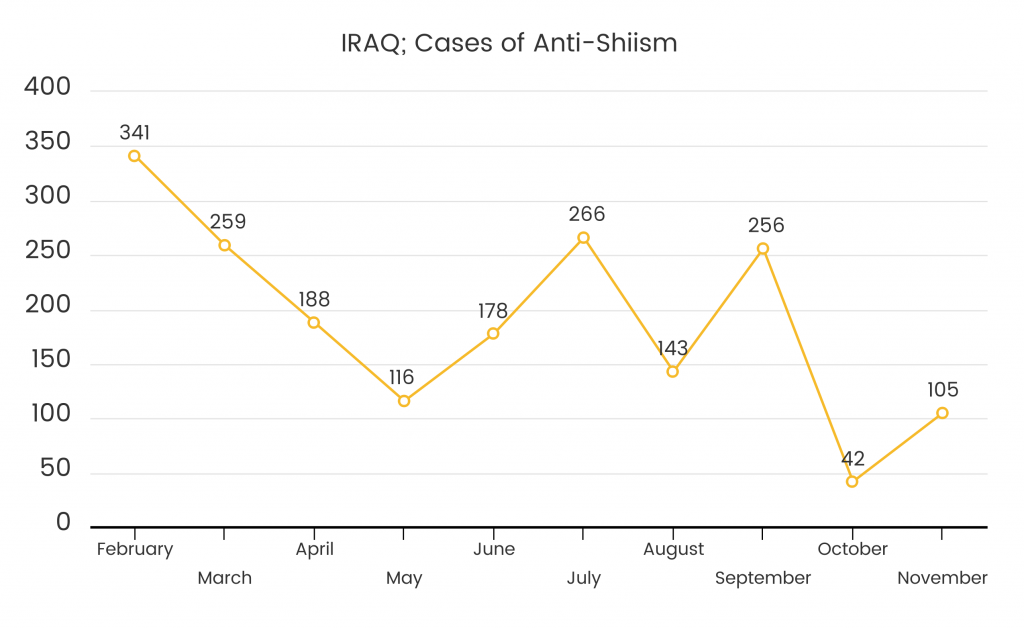
On average, an IED is detonated in Baghdad. One local states, “We are never sure if we will return home from the simplest of trips; even going to the market is a risk.” A substantial majority of explosions occur in popular shopping centers and civilian areas. Attacks are coordinated to be the busiest times to guarantee the most number of casualties. Furthermore, bombs are detonated consecutively to target not only people in specific areas but also aid workers.
Shia populated areas of Iraq lack sufficient security. Despite the recognized trend of attack prominence in densely Shia populated areas, the Iraqi government has yet to manage said areas and adequately reduce violence. Iraq is home to prominent Shia holy sites, and thus must be able to guarantee the safety of pilgrims.
Dangers of increased attacks exist as a result of a decrease in geographical ISIS stronghold. As per SRW analysis, civilian targets have grown with the decline in ISIS power. Iraq continues to be a haven for ISIS extremists, terrorist groups, and radical individuals. Although fewer bombings and casualty numbers seem lower than 2016, Iraq is far from safe for the Shia minority.
In the second half of 2017, a high frequency of mass graves was discovered. These graves hold the bodies of hundreds of civilians killed as a result of direct violence. Bodies may also be of those reported as injured or with undiscovered trauma. Medical research shows that many of those recovered displayed signs of extreme malnutrition. SRW notes that the death count of those found in mass graves was not initially in reported death counts. Further, SRW warns the trend of reduced casualty count in Iraq may be a result of unreported death.
Madagascar
Due to the islands vast resources, prominent Shia businesses have set grounds in Madagascar. In the past five years, two incidents of anti-Shiism have been seen, the second of which was in 2017.
Yanish Ismail was kidnapped and held for ransom by 14 armed assailants on his way back from a funeral.
The Ismail family have since paid the ransom and have left Madagascar due to the nation’s lack of security. Due to the island nations lack safety for Shia Muslims, Shia businesses and investors have reduced their business ventures in this country, substantially affecting the economic development of the nation.
Malaysia
In September 2017, Malaysian authorities arrested 200 Iraqi Shia Muslim students from Kuala Lumpur as they attended a Muharram commemoration. The authorities also arrested the Iraqi ambassador along with his wife and children. All arrestees were released after diplomatic interference. Malaysia banned all Shia Muslim related activities and publications year ago, but this time they did not even respect diplomatic immunity that this group had within the Iraqi embassy.
Despite Malaysia’s rich cultural diversity, tolerance for Shia Muslims is nonexistent. Shia Muslims are not recognized as a religious entity and their practices are considered unlawful. Fueled by anti-Shia education, marginalization of Shia muslims increases day by day. Due to the lack of recognition by the nation’s constitution, Shia Muslims are left without facets to pursue justice. Anti-Shia incidents in 2017 point to an increase in structural and direct violence against this population by the nation’s authority.
Nigeria
In the past five years, Nigeria has displayed exponential growth in its native Shia Muslim population. However, along with it, extremism and anti-Shia sentiment have also grown. Governmental forces have repeatedly targeted Shia Islamic centers in the Kunduna region. In continuance with the arrest and detainment of Sheikh Ibrahim Zakzaky in 2015, the Nigerian government continues to limit expression and aims to contain the Shia community. Zakzaky and his wife were ordered to be released by the Abuja Division of the Federal High Court
however the couple is yet to be freed. The court also awarded them 50 million NGN (Equivalent to approximately 138,500 USD) and a temporary residence. There has been no regulatory compliance with the court’s ruling.
In late December, sources reported Zakzaky has lost vision in his left eye entirely and is losing sight in his right eye. Since their violent detainment in 2015, Zainab Zakzaky still has a bullet lodged in her chest. Despite him and his wife’s deteriorating health, medical attention is restricted.
Letters of appeals were sent to President Buhari calling on him to “embrace peace and obey the laws of the land” as he had asked Shia Muslims to do in his 2017 New Year’s message by Femi Falana, the Zakzaky’s lawyer. Falana further called the government’s lack compliance to the court’s ruling as a sign of a “weak state.”
Pakistan
Shia in Pakistan is among the highest tier of society. A significant portion of Pakistan’s professional is of the Shia faith. Despite their political, economic and social success, Shia in Pakistan remains targeted for their faith. Terror organizations identify and target officials who identify as Shia, killing them and their close associates.
In addition to targeting individuals, Shia populated areas are home to violence. Shia education and religious centers are also targeted. Anti-Shia sentiment is apparent in attacks in Pakistan as they take place in Shia majority locations of the main cities. The incidents stand in support of anti-Shia beliefs that Shia individuals are not Muslims and are seen as unworthy of fundamental human rights.
Terror organizations remain proactive in Pakistan. Groups like Lashkar-e-Jhagvi (Lej), an extremist militant group, have pledged: “all Shias are worthy of killing, and the intention is to make Pakistan their graveyard,” according to an open letter they wrote to the Hazara people in Baluchistan. Organizations such as Tehreek-i-Taliban (TeT) and Lej have killed over 2500 Shia Muslims in Pakistan.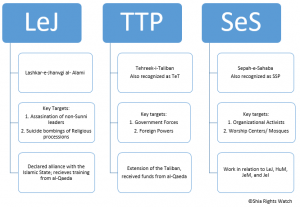
Attacks orchestrated are sporadic yet detrimental. Over the span of 2017, there have been a handful of significant explosions that have killed and injured over 100 civilians. These attacks are mainly in religious places of worship as well as religious education centers.
The fear generated by attacks similar to this one has caused some Shia to avoid traveling alone. Even the government fears that people of the Islamic sect travel at their peril. In July 2017, around 1,000 Shia on their way back from a pilgrimage from holy sites in Iran and Iraq found themselves unable to continue at the border between Iran and Pakistan in the border town of Taftan. The pilgrims found themselves with the option of having to continue through hostile territory that is extremely dangerous for Shia without protection. They have requested to be escorted by the security forces, but their application has not been granted yet.
Sources report negligence on the part of the regional governments. Shia Muslims feel their operations have been “impeded” by lack of procedural security measures and primary access to electricity and local management.
Although Shia makes up at least one-third of the Pakistani population, Shia face discrimination and live under psychological and physical torment. In the past five years, targeting of Shia individuals in prominent sects of society has increased. Shia Rights Watch predicts an aim of inducing fear in the Shia population in this nation as a means of limiting Shia expression.
The lack of government response to anti-Shiism in the form of prosecution points to existing systematic discrimination against the Shia population. With close analysis, one can see a trend of authority involvement after cases of anti-Shiism, and that in response to immense and widespread Shia protests.
Furthermore, not only does the Pakistani government fail to carry out due procedure, new laws such as the Prevention of Electronic Crime Act of 2016 allows for prosecution of allegedly “blasphemous” social media posts. The US Commission on International Religious Freedom reports that 40 people are on life-sentences, some on death row, on charges of “blasphemy.” Trends of increased religious and ethnic minorities charged on the grounds of this law show that this regulation is used as a means of limiting expression and speech in the nation.
Shia populations are most dense in geopolitically essential areas of Pakistan and chaos in those regions create regional distress. Thus, despite their social isolation, Shia individuals hold great power for influence. In early July, after a protest in response to twin Parachinar terror attacks, provincial governor Iqbal Zafar distributed the equivalence of 5,000 USD to those injured in the bombings and approximately 9,000 USD to families with lost loved ones on behalf of Prime Minister Nawaz Sharif. Reparations distributed were in response to occurring protests. Although there is substantial discrimination against Shia Muslims, the Pakistani government realizes growing dissent in Shia populated areas results in regional instability and can lead to increased foreign involvement in the nation.
Saudi Arabia
The Kingdom of Saudi Arabia is home to significant shifts in politics and economy as of 2017. With the rise of Mohammad bin Salman as the crown prince, Saudi Arabia continues to undergo a claim of modernization of the Kingdoms rights system. Bin Salman led an “anti-corruption” committee by which over 11 Saudi Princes and officials were arrested. Many hoped bin Salman would pave the way for intergroup dialogue within the nation and possibly even lead to reduced anti-Shiism. However, 2017 in Saudi Arabia consisted of everything but reduced religious discrimination.
In late June, Saudi forces seized the town of Awamiya. Entrances to the city were closed, and discriminatory bullets and mortar rockets were shot damaging existing infrastructure. The government claimed aims of renovating the area. However, violence exhibited towards residents suggests otherwise. The al-Musawarah neighborhood, home to historical structures dating back to the Ottoman empire has been mostly demolished by soldiers. Demolition of homes and businesses has led to a shortage of water, electricity and gas supply. Residents state that renovation in other sections of the nation did not require demolition and claimed the government had targeted Awamiya to limit Shia activities. Later in May, the government changed rhetoric from “restoration” to “anti-terrorism” to justify the use of arms.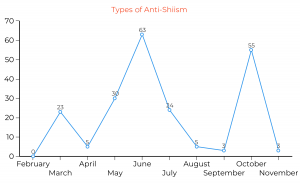
In addition to damages in infrastructure, systematic use of violence against town residents has to lead to the death of over ten people and the arrest of numerous others. Passage of public service vehicles such as ambulances endangered the life of residents. In multiple cases, bodies of residents shot were left on the street, locals state. One resident reports, “No one has been able to leave their houses to go to work, school or even get food as people are afraid to move” because of the numerous armored tanks and forces that roam the town. By mid-June, snipers shot upon civilians wounding over 40 civilians, many of which were women and children. By August 2017, over 488 homes and hundreds of businesses were destroyed.
For decades, Shia Muslims have lived as second-class citizens in their native Saudi land. Despite ongoing systemic violence and years of repression, the occupation of Awamiya was the first official act of direct violence. While Shia Muslims report living under a “glass-ceiling” by which their professional and economic advancements are limited by their religious identity, 2017 witnessed the first significant government operation in mass destruction of Shia residential areas. Furthermore, the lack of humanitarian engagement in the occupation of Awamiya is worrisome. Despite the demolition of major historically S
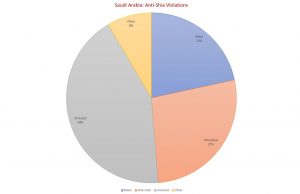
hia regions and the arrest and torture of residents, the international community watched in silence.
Across Saudi Arabia, over 100 people have been arrested. Due to the indiscriminately violence against the Shia population, 51 have been killed, and 64 others have been wounded. A significant number of those killed and injured are women and minors amidst crackdowns in Awamiya.
Figure 1. displays trends of anti-Shiism in Saudi Arabia in 2017. June stood witness to the highest number of violence in correspondence to the seizure of Awamiya.
The majority of deaths and injury came from snipers perched upon buildings who shot at passersby. The lack of medical resources in the town augmented death tolls post-violence. As the entrance and exits of the city were restricted, ambulances were prevented from entering the city. Further, aid was precluded to those injured as people feared going out of their homes.
Arrests took place concurrent with the seizure of Awamiya as troops ransacked the area and targeted activists in the region.
The second most frequencies of anti-Shiism occurred in October. Muharram, a month by which Shia Muslims take to commemorate the death of Prophet Mohammad’s grandson, fell parallel to October. SRW notes that because Muharram has the largest congregation frequency, terror organizations use this time to target the a large number of Shia Muslims.
Compared to previous years, death tolls in Saudi Arabia were high, pointing to an augmentation of violence against Shia individuals. As seen in figure 2. 22% percent of violations were deaths, and 27% were injuries sustained from government violence.
The term “other” consists of illegal raids and setting of personal property on fire as forms of coercion and induction of fear. Threats to family members and loved ones were also included in the “other” category of anti-Shia violations.
Conclusion
There is a fine line between human rights and political benefits. Politics are to serve people of nations; human rights are to ensure their dignity and humanity. Despite international efforts to merge the two, politics and human rights remain polar, to a certain degree. As a result, politics is left for governments to manage and rights are left for citizens to demand.
Shia Muslims, with their long history of nonviolence, impactful contributions to science, humanity, economy and social good, have always been attacked. Discrimination towards Shia Muslims is not because of their faith or religion, but because this population stands up for justice and calls out prejudice. They demand rights and dignity, not only for themselves but all.
SRW invites the readers to pay particular attention to the location of anti-Shiism, in fact not only anti-Shiism but the area in which most human rights violations take place. Countries with limited democracy, governments that prioritize power over leadership, societies in which higher education is a privilege rather than a right, and nations with a high number of unemployment have the most human rights violations. In such communities, Shia Muslims and their pro-democratic actions are considered “threats to national security.” Shia Muslim who live in free countries, in which their dignity is valued and have freedom of religion and speech, are prosperous and peaceful educators, businessmen and women, social-good contributors and more. As an example, there has not been a single terrorist action carried by a Shia Muslim in Europe and America.
Therefore, SRW highlights that Shia Muslim is not killed or discriminated against because they cause problems with their ideologies or practices, but they are neglected because they believe in the power of humankind and openly invite all to take part in making their societies a better and more welcoming place.
From SRW to Shia Muslims:
SRW recognizes the decades of ongoing conflict Shia Muslims have had to endure. Shia Muslims all over the world face direct, systemic and cultural discrimination by their religion. SRW believes the first front against human rights violations. Hence, SRW promotes the use of dialogue and peaceful protests as a means of raising awareness against oppression. * Shia Muslims must first build an active, educated and aware populace that promotes justice and condemns anti-Shiism.
* Minority groups have the right to demand equality in their communities. However, SRW warns against the use of violence to demand rights. At its core, Shia Islam denounces violence while encouraging education and peace-building endeavors.
* SRW encourages active participation of Shia Muslims in their nations legislative process such to show active citizenship.
* Further, Shia Muslims must contact their national officials volunteering participation in dialogues and planning that directly, and indirectly effects their communities.
Ways to become directly involved in the ongoing peace-building projects can be found on ShiaRightsWatch.org.
From SRW to Leaders and Governments:
* SRW invites governments and Shia Muslim leaders to take steps towards building a better rapport and mutual respect.
* We further encourage taking advantage of nonviolence and peaceful approaches Shia Islam offers to create communities in which people from all faith, ethnicity, religion, color, and background live happy and productive lives.
* Shia Muslims and their governments must rebuild broken bridges, re-establish trust and open communication avenues.
* Attacks against Shia Muslims are dense on religious occasions such as Ramadhan and Moharram, and that in religious centers. Protection of major Shia centers on religious occasions can reduce the casualty count significantly.
* SRW invites governments to allocate resources and management to the protection of Shia Muslims ,especially in these two holy months.
* Further, SRW encourages the co-creation of security plans by both Shia Muslims and their governments. Cooperation between Shia Muslims and their policy makers instills trust in both parties and thus can lead to long-term positive social change. While state leaders are the official decision-makers in the nation, Shia Muslims are targets of a significant portion of violence.
* SRW calls for a unity of command in planning of security measures, and a unity of effort by which national officials and Shia Muslims constituents both carry out measures to reduce violence.
* This NGO also invites governments to establish relationships with their Shia Muslim communities through their leaders and Marja’. Marja means “source to imitate/follow” or “religious reference,” is a title given to the highest level Shia leaders. Maraji’ (plural of marja) are influential resources within the Shia communities, thus they can be a great source of encouragement for human rights involvement.
* We invite governments to free political prisoners and treat detainees with fairness as a sign of their intention to rebuild healthy relationships with their Shia Muslim constituents.
Respect to rights enhances life for all: Shia Rights Watch wishes for 2018 to be a peaceful year for all humankind.




